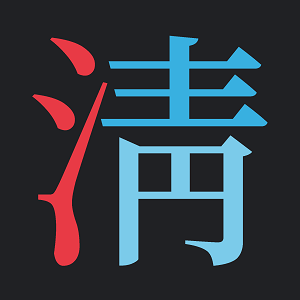淸
부수: 氵
획수: 11획
淸 has the meanings clear water, to clean, clean and pure.

淸 = 氵 + 靑
X = semantic + semantic/phonetic
• 氵 is a component form of 水. It depicts flowing water and represents the meaning ‘clear water’.
• 靑 is comprised of 龶 and 円 and represents ‘green’.
Evolution:
淸 = clear water ➔ to make clear ➔ to clean
淸 = clear water ➔ pure
靑 = 龶 + 円
• 龶 was originally 屮. It depicts sprouting vegetation and represents ‘green’.
• 円 is a distortion of 井 and is used for its sound. In Chinese and Japanese, 月 is used instead.
Mnemonic
Imagine a swampy pond 氵 with green vegetation sprouting 屮 to the surface. A landscaper decided to clean out 淸 and remove the vegetation, making the water pure again.
Vocab
| 淸酒 | 청주 | a clear rice wine |
| 淸溪川 | 청계천 | Cheonggye River |
| 淸掃 | 청소 | cleaning; sweeping |
| 肅淸 | 숙청 | purge; purification |
| 淸算 | 청산 | settlement (of debts) |
| 淸掃夫 | 청소부 | a street cleaner |
| 淸新 | 청신 | new; fresh |
| 淸涼 | 청량 | refreshing; cool |
| 血淸 | 혈청 | serum (blood) |
| 淸潔 | 청결 | cleanliness; tidiness |
| 淸涼 | 청량 | cool and refreshing |
| 淸楚 | 청초 | neat/clean elegance |
| 淸雅 | 청아 | pure elegance; graceful |
| 淸淨 | 청정 | purity; clearness and cleanness |
| 淸廉 | 청렴 | integrity; upright |
| 淸貧 | 청빈 | poor and honest |
| 淸白吏 | 청백리 | incorruptible official |
| 淸敎徒 | 청교도 | Puritan |
Additional notes
Note that Chinese and Japanese use 清 while Korean uses 淸. The difference between 青 and 靑 is negligible because 月 and 円 are both distortions of 井. Korean uses 淸(靑|円) because that is what’s used in the Kangxi dictionary.
Other resources
Image searches
Google
Bing
Yahoo Japan
Baidu (click 图片)
Sogou
Pinterest
Flickr
CJKV
CJKV Dict
Wikitionary 淸(Alternative|U+6DF8)
Wikitionary 清(Standard|U+6E05)
Unihan Database 淸(Alternative|U+6DF8)
Unihan Database 清(Standard|U+6E05)
Korean
Chinese
Written Chinese
Arch Chinese
ZDic
CC-Canto
Chinese Text Project
The Chinese University of Hong Kong (etymology)
Chinese Boost
Japanese
Takoboto
Jisho
JLearn.net
Sakura
The Kanji Map
Sentence Search
Immersion Kit
Vietnamese
Bibliography
— Daum 사전, [s.v. 淸].
— Grant, B.K. (1982). A Guide To Korean Characters: Reading and Writing Hangul and Hanja, [s.v. 981]. Seoul: Hollym.
— Outlier Dictionary of Chinese Characters, [s.v. 淸, 氵, 靑].
— Seely, C., Henshall, K.G., & Fan, J. (2016). The Complete Guide to Japanese Kanji: Remembering and Understanding the 2,136 Standard Japanese Characters, [s.v. 547]. Singapore: Tuttle Publishing.